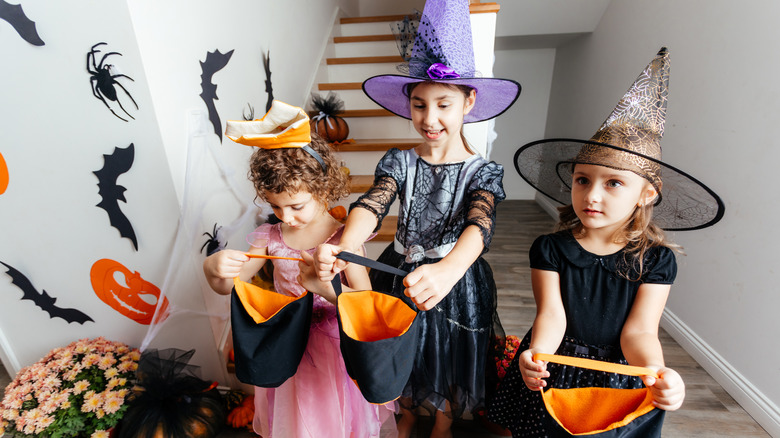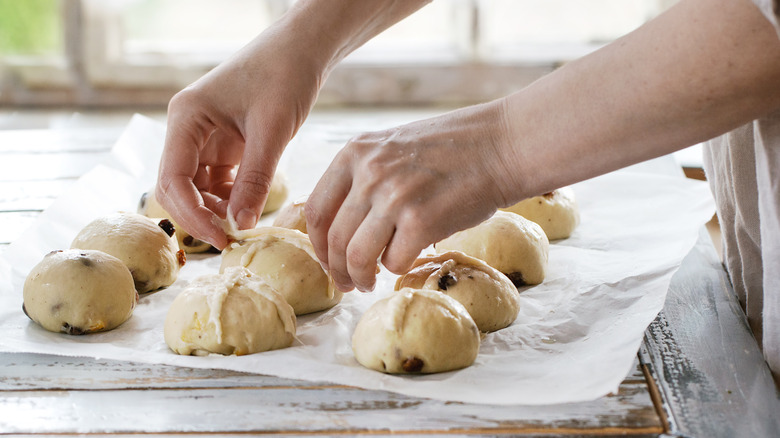Trick-Or-Treating Likely Began With This European Cake
Many of us may commonly think that trick-or-treating became a Halloween tradition in the 20th century with little boys dressed as cowboys or even in the time of Victorian decorative cutouts. But the origins of this modern tradition go back much further.
Most of us know that Halloween originated from the Celtic holiday Samhain. During ancient Samhain celebrations, hearth fires at homes would burn out as participants gathered the last of the harvest in the fields late into the night (per History). People would gather to celebrate and light a communal bonfire. When the multi-day celebration of drinking and feasting was finished, a flame was brought home from the bonfire to relight each home's hearth. During this dark time of year, the ancient Celts believed that the barrier between the living world and "Otherworld" was thin, allowing spirits of deceased relatives and malicious spirits to roam the earth. The ancient Celts dressed in costume as monsters and animals to trick malicious spirits and fairies into passing them by, according to History.
The origins of going door-to-door for treats, however, seem to come from multiple strands — one of which was an Irish tradition.
Soulers and soul cakes
You can trace trick-or-treating, in part, to one practice called mumming, an Irish tradition of going door-to-door in costume and singing in exchange for cakes. In the Middle Ages, children and poor adults, called soulers, would go door-to-door singing and offering prayers in exchange for food or coins, which was called souling (via Today I Found Out).
These medieval soulers would commonly receive a soul cake for their pledge to pray for the departed of the house or monastery (per Learn Religions). The cakes were often decorated with crosses, possibly to represent that the cakes were alms for the poor or souls being freed from purgatory by the promised prayers (via Yorkshire Bylines & Today I Found Out). Some soul cakes were even consecrated and blessed.
The cookies themselves varied and seem to have been made with what people had on hand. Some were a traditional shortbread cookie recipe, while others were small tarts filled with sweetened dried fruit. Some were made using rice flour. Most often, these sweet cakes were spiced with nutmeg, cinnamon, and ginger, and included dried fruits, according to Yorkshire Bylines.
In Yorkshire, England where the tradition lives on, one traditional recipe calls for a dense, egg-risen spiced cookie decorated with a cross of currants and a row of currants circling the biscuit-cut edge, giving the finished cookie a religious appearance. Soul cakes also survived in the Northeast regions of Lancashire and Cheshire, where they're known as Harcakes (per Yorkshire Bylines).

